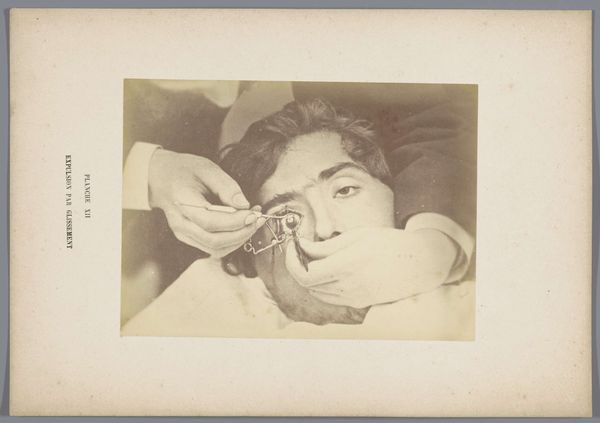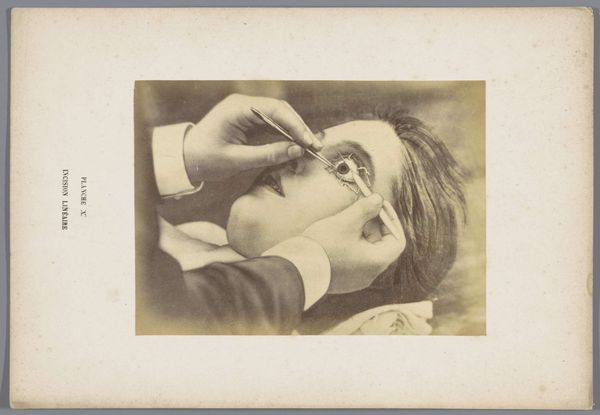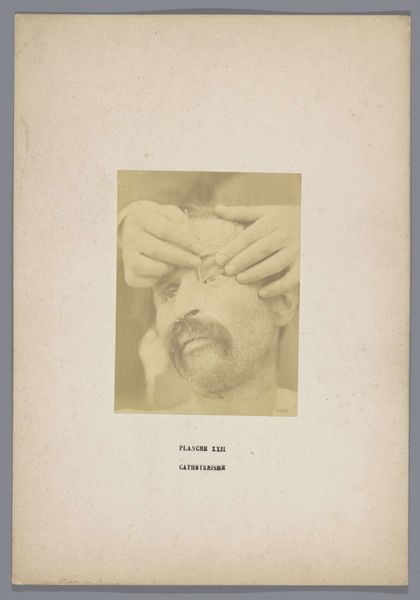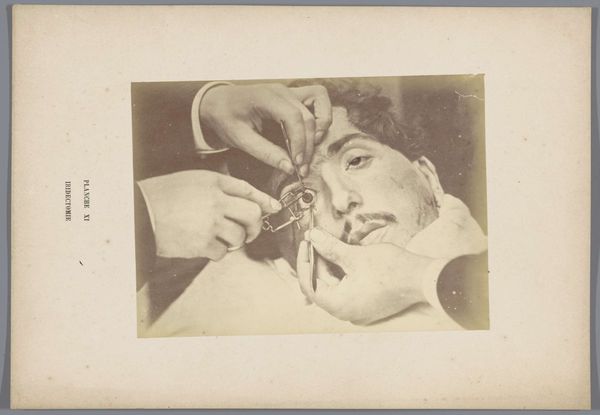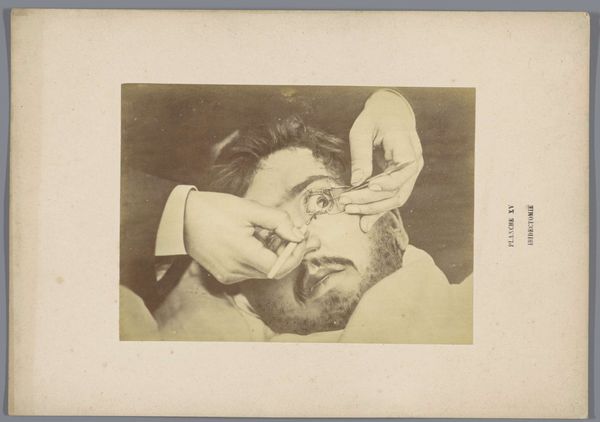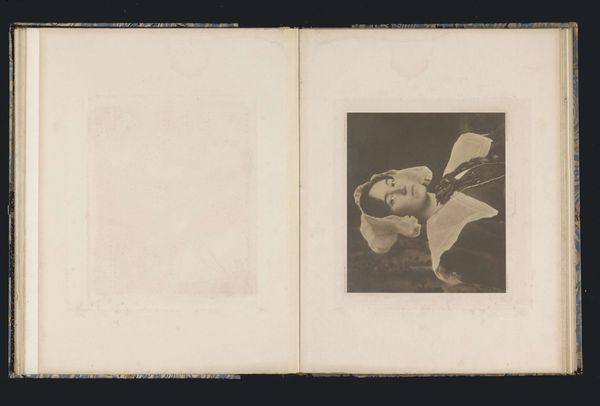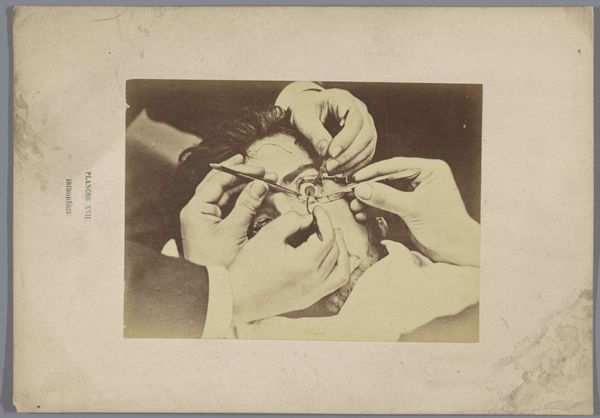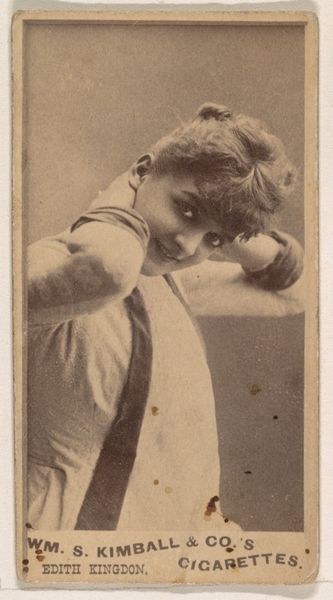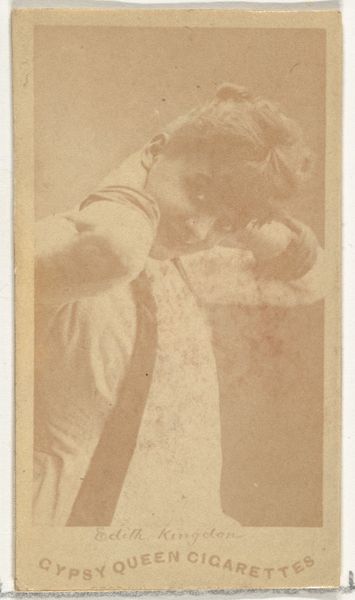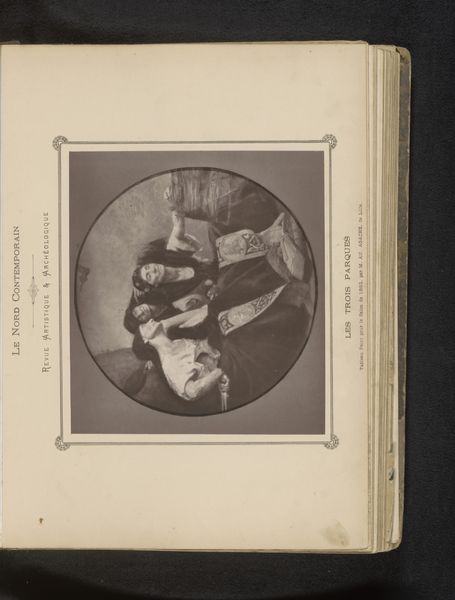
photography, gelatin-silver-print
#
portrait
#
photography
#
coloured pencil
#
gelatin-silver-print
#
realism
Dimensions: height 125 mm, width 173 mm
Copyright: Rijks Museum: Open Domain
Curator: Before us, we have a gelatin-silver print titled "Operatie aan de onderste oogflap" - roughly translating to "Operation on the Lower Eyelid" - by A. de Montméja, made sometime before 1873. What strikes you about it? Editor: The first thing that stands out is the unsettling detail. It's raw and immediate, the clinical tools and the vulnerable expression create a sense of almost unbearable intimacy. Curator: It’s a fascinating look at the convergence of medical progress and social norms in the 19th century. The photograph documents not only surgical technique but also the evolving relationship between doctor and patient, touching on issues of class and gender. Were procedures like this accessible to all? Were patients fully informed of their choices? Editor: Right. And I’m wondering about the labor involved in creating this specific image, from the photographer meticulously mixing chemicals in a darkroom to the surgeon perhaps positioning the patient specifically for the shot. It's an insight into the working processes of both art and science. Also, the choice of using photography at all! Think of the resources, time, and skill necessary to take such a graphic and arguably quite shocking picture for study. Curator: It underscores photography’s emergence as a vital tool for scientific advancement. Yet it also begs ethical questions. We must ask ourselves about consent, the power dynamics at play, and how representations like these shaped medical understanding and social perception. Did the proliferation of images like these desensitize society to medical procedures? Editor: The question of consumption is important. How many people viewed this? Was it widely circulated among doctors or was it contained within medical journals? What kind of exchange and interaction occurred within the space of knowledge production? All of those interactions required physical movement, exchange and cost in both production and reception. Curator: Precisely. By examining art, even photographs like this one of a surgery, we are forced to engage in conversations about our shared past and how we move forward together. The social, economic and power dynamics must be central to how we discuss artworks today. Editor: And for me, it's a fascinating insight into the actual means, skills, and processes which underpinned knowledge and medical advancement at this time, with gelatin and silver playing a pivotal role.
Comments
No comments
Be the first to comment and join the conversation on the ultimate creative platform.

